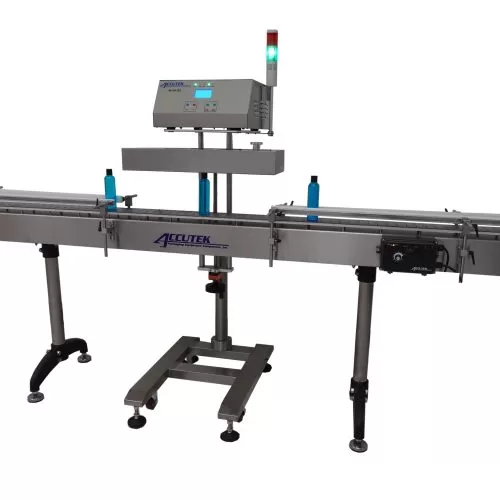what is sealing machine? Sealing machine in packaging refers to the engineered processes used to close or secure a package, creating a protective barrier that preserves contents and prevents contamination or leakage. These seals may be mechanical—like screw-on caps—or involve bonding materials using methods such as heat, adhesive, induction, or ultrasonic technologies.

Security and freshness are primary goals: a sealed package keeps out moisture, air, dust, microbes, and tamper attempts, ensuring product quality from production through consumption.
Common Sealing Methods in Packaging
1. Heat Sealing
- Uses heat and pressure to fuse thermoplastic films or foils, creating an airtight and watertight seal. Common in flexible packaging, blister packs, and food pouches.
2. Adhesive Sealing & Cold Sealing
- Involves pressure-sensitive or hot-melt adhesives to bond surfaces—ideal for paperboard, cartons, or resealable pouches—without heat.
3. Induction Sealing
- Uses electromagnetic induction to heat and seal a foil liner inside caps, creating tamper-evident and airtight seals on bottles or jars. Widely used in pharma, food, and beverages.
4. Ultrasonic Sealing
- Employs high-frequency vibrations to generate localized heat, bonding materials quickly and cleanly—effective for thicker films or medical packaging.
5. Vacuum Sealing
- Removes air from the package before sealing, extending shelf life and preventing oxidation—common in food packaging.
6. Mechanical / Cap Sealing
- Physical closures like screw caps, crimped seals, or press-on lids that secure containers without melting materials. Often paired with induction liners for added tamper-evidence.
Why Does Sealing Machine Matter?
- Ensures Product Safety & Integrity: Prevents leaks and contamination.
- Preserves Freshness & Shelf Life: By excluding oxygen and moisture.
- Provides Tamper Evidence: Especially important in pharmaceuticals and food.
- Complies with Regulations: Required in medical, food, and chemical packaging.
- Supports High-Speed Automation: Modern sealing methods can be fully integrated into automated lines.
Quick Comparison of Sealing Machine
| Method | How It Works | Common Applications | Key Benefits |
|---|---|---|---|
| Heat Sealing | Bond via heat + pressure | Food pouches, blister packs | Airtight, strong, scalable |
| Adhesive / Cold Seal | Bond via glue/adhesive | Cartons, resealable pouches | No heat, suitable for heat-sensitive |
| Induction Sealing | Electromagnetic foil seal | Bottles with foil liners | Tamper-evident, clean, airtight |
| Ultrasonic Sealing | Vibrational bonding | Medical trays, thicker film packaging | Precise, fast, clean seals |
| Vacuum Sealing | Air removal then seal | Meat, perishables | Extended freshness, leak-free |
| Mechanical (Cap) Seal | Physical closure | Screw caps, press-on, crimped bottles | Simple, versatile, tamper-capable |
Final Thoughts
Sealing is a foundational process in packaging—vital for product safety, longevity, and regulatory compliance. The right sealing technology depends on product form, packaging material, production scale, and desired shelf-life. Whether it’s a heat seal on a food pouch or an induction liner under a bottle cap, a properly sealed package is your first line of defense.